SS / CS Fittings
Fittings
Butt Weld Fittings
Butt weld pipe fittings, formed by welding pipes, enable alterations in flow direction, size reduction, closure, or branching in diverse industries. These fittings, such as elbows, tees, end caps, and reducers, come in various forms, with nominal pipe sizes and wall thicknesses adjusted based on pipeline pressure requirements.
Size Range
1/2” to 24”
Grade Options
304, 316 & A-106
Thickness Variations
SCH10, SCH40, & SCH80
Types Available
Welded & Seamless

Elbow 90 Degree
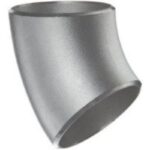
Elbow 45 Degree
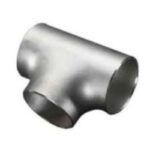
Equal Tee

Reduce Tee

Concentric Reducer

Eccentric Reducer
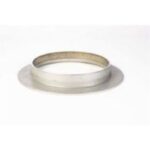
Collar
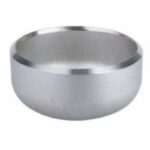
End Cap

Stub End

CS elbow

CS Tee
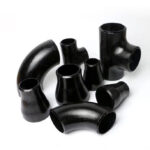
CS Fittings
Fittings
BSP & NPT Thread Fittings
BSP and NPT fittings are vital in piping systems. BSP, with threaded ends, suits lower-pressure applications, while NPT, with tapered threads, excels in high-pressure scenarios. BSP is versatile in industries like oil and gas, while NPT is widely used in the United States, offering options like elbows and couplings for efficient fluid conveyance.
Size Range
1/4” TO 4”
Grade Options
304, 316 & A-105
Pressure Rating
150LB & 3000 LBS & 6000 LBS

Threaded Elbow
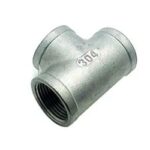
Threaded Tee

Threaded Reduce Tee

Threaded Union
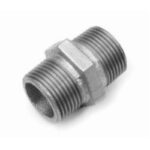
Barrel Nipple
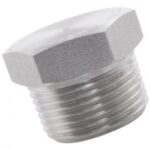
Dead Plug
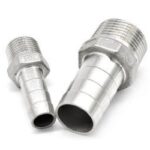
Nozzle

Threaded Reduce Elbow

Pipe Nipple
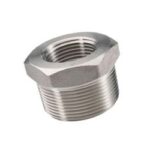
Reduce Bush
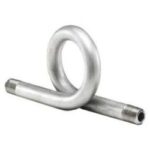
Syphon
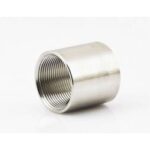
Threaded Socket

Threaded Street Elbow

Threaded Cup

Forged Fittings
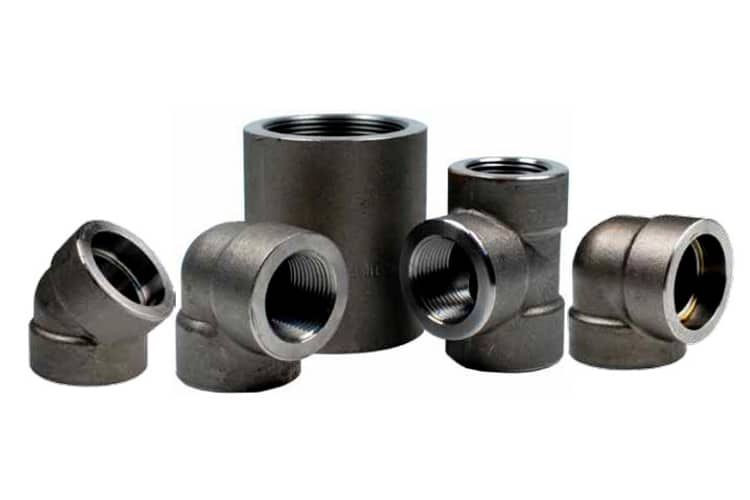
cS Forged Fittings
Elevating Performance and Design
Premium Fittings
Corrosion Resistance
Stainless Steel (SS) excels with excellent corrosion resistance, suitable for harsh environments, while Carbon Steel (CS) can be coated or treated to enhance its resistance.
Strength and Durability
Stainless Steel (SS) boasts enduring strength, even at high temperatures, while Carbon Steel (CS) offers strength but may be prone to corrosion over time.
Temperature Resistance
Both SS and CS fittings endure various temperatures, with stainless steel typically outperforming at higher temperatures.
Versatility
Both materials, SS and CS, exhibit versatility, finding widespread applications across diverse industries such as petrochemical, chemical processing, oil and gas, and water treatment.
Machinability
Stainless Steel (SS) can pose challenges in machining compared to carbon steel, which generally exhibits good machinability.
Aesthetic Appeal
Stainless steel presents a polished and visually appealing appearance, making it well-suited for applications where aesthetics play a crucial role, such as in architectural and decorative uses.
Aesthetically Pleasing Finishes
Available in various finishes and designs, our stainless steel and mild steel chequered sheets add a visually appealing element to architectural and design applications.
Hygienic Properties
Stainless Steel (SS) exhibits non-reactivity and ease of cleaning, rendering it suitable for hygienic applications in industries such as food processing, pharmaceuticals, and medical sectors.
Non-magnetic Properties
Certain grades of stainless steel boast non-magnetic characteristics, offering advantages in specific applications where magnetic interference is a concern.
Resistance to Scaling and Oxidation
Stainless steel exhibits resistance to scaling and oxidation, making it suitable for applications where materials are exposed to elevated temperatures.
Cost-Effectiveness
Carbon steel fittings are frequently more cost-effective than stainless steel, making them a preferred choice for specific applications where corrosion resistance is not the primary consideration.
Weldability
Carbon steel is generally more weld-friendly than certain stainless-steel grades, making it a preferred choice for welding applications where simplicity and efficiency are crucial.
